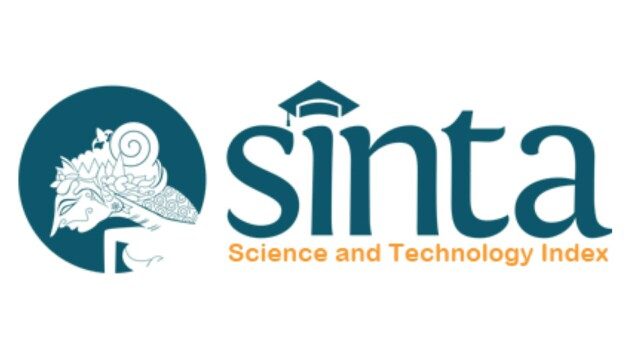THE IMPACT OF RELIGIOSITY AND USER PERCEPTIONS ON MOBILE PAYMENT ADOPTION AMONG STUDENTS AT ISLAMIC UNIVERSITIES IN YOGYAKARTA
Abstract
This study aims to analyze the influence of religiosity on university students' interest in using mobile payment services through the extended Technology Acceptance Model (TAM). The research objective is to examine how perceived usefulness (PU), perceived ease of use (PEU), perceived security (PS), and religiosity (R) impact mobile payment adoption among students in Islamic universities in Yogyakarta. Data was collected from January to March 2024 via a Google Form questionnaire involving 203 students from Islamic universities in Yogyakarta. The quantitative analysis was performed using Smart-PLS. The findings indicate that among the four exogenous variables, only perceived usefulness (PU) significantly and positively affects mobile payment adoption, highlighting its crucial role in influencing student adoption decisions. Conversely, perceived ease of use (PEU), perceived security (PS), and religiosity (R) showed positive but insignificant effects on mobile payment adoption. Limitations include the relatively small sample size and the focus on a specific demographic, which may affect the generalizability of the results. Future research should explore a larger and more diverse population, include additional variables such as cultural and socioeconomic factors, and employ longitudinal studies to better understand the dynamics of mobile payment adoption over time.
Keywords
Full Text:
PDFReferences
Alkhowaiter, W. A. (2022). Use and behavioural intention of m-payment in GCC countries: Extending meta-UTAUT with trust and Islamic religiosity. Journal of Innovation & Knowledge, 7(4), 100240. https://doi.org/10.1016/j.jik.2022.100240 Annisa, N., Rahawarin, M. A., & Pattimukay, H. V. R. (2023). Evaluasi Kebijakan Fitur Quick Response Code Indonesian Standard (QRIS) Di Kantor Perwakilan Bank Indonesia Provinsi Maluku. JUPEIS : Jurnal Pendidikan Dan Ilmu Sosial, 2(3), Article 3. https://doi.org/10.57218/jupeis.Vol2.Iss3.761 Baliawan, P. R. D., Putranti, L., & Herdiany, H. D. (2024). ANALYSIS OF THE INFLUENCE OF SELF-EFFICACY, PERCEIVED EASE TO USE, PERCEIVED BENEFITS, AND PERCEIVED RISK, ON INTENTION TO USE DIGITAL PAYMENT APPLICATIONS IN YOGYAKARTA. Business Management Analysis Journal (BMAJ), 7(1), Article 1. https://doi.org/10.24176/bmaj.v7i1.12292 Bezovski, Z. (2016). The Future of the Mobile Payment as Electronic Payment System. European Journal of Business and Management, 8(8), Article 8. Bhattacherjee, A. (2001). Understanding Information Systems Continuance: An Expectation-Confirmation Model. MIS Quarterly, 25(3), 351–370. https://doi.org/10.2307/3250921 Cahya, C. C., & Umam, K. (2023). Is the Islamic Religiosity Become the Cashless Behavior Among Muslim Community? In N. Mansour & L. M. Bujosa Vadell (Eds.), Islamic Sustainable Finance, Law and Innovation: Opportunities and Challenges (pp. 465–471). Springer Nature Switzerland. https://doi.org/10.1007/978-3-031-27860-0_42 Chin, W. W. (1998). The partial least squares approach to structural equation modeling. Modern Methods for Business Research, 295(2), 295–336. Dara, S. R., & Mariah, M. (2020). Peran Fintech Dalam Upaya Untuk Meningkatkan Literasi Keuangan Pada Masyarakat di Jakarta. AKURASI: Jurnal Riset Akuntansi Dan Keuangan, 2(3), Article 3. https://doi.org/10.36407/akurasi.v2i3.240 Davis, F. D. (1989). Perceived usefulness, perceived ease of use, and user acceptance of information technology. MIS Quarterly, 319–340. de Luna, I. R., Liébana-Cabanillas, F., Sánchez-Fernández, J., & Muñoz-Leiva, F. (2019). Mobile payment is not all the same: The adoption of mobile payment systems depending on the technology applied. Technological Forecasting and Social Change, 146, 931–944. https://doi.org/10.1016/j.techfore.2018.09.018 Elsotouhy, M. M., Mobarak, A. M. A., Dakrory, M. I., Ghonim, M. A., & Khashan, M. A. (2023). Integrating ISS and SOR models to investigate the determinants of continuance intention toward using m-payment for donations (Sadaqah): The moderating role of Islamic religiosity. International Journal of Bank Marketing, 41(7), 1640–1670. https://doi.org/10.1108/IJBM-11-2022-0498 Grover, P., Kar, A. K., Janssen, M., & Ilavarasan, P. V. (2019). Perceived usefulness, ease of use and user acceptance of blockchain technology for digital transactions – insights from user-generated content on Twitter. Enterprise Information Systems. https://www.tandfonline.com/doi/abs/10.1080/17517575.2019.1599446 Gupta, A. (2014). E-COMMERCE : ROLE OF E-COMMERCE IN TODAY’S BUSINESS. 4(1). Hair, J. F., Hult, G. T. M., Ringle, C. M., Sarstedt, M., Danks, N. P., & Ray, S. (2021). An Introduction to Structural Equation Modeling. Springer. https://doi.org/10.1007/978-3-030-80519-7_1 Hariyana, T. D. (2021). Eksistensi Asas Iktikad Baik dalam Perjanjian Jual Beli melalui Internet dengan Sistem Pembayaran Cash On Delivery. UNISKA Law Review, 2(2), 545072. https://doi.org/10.32503/ulr.v2i2.2287 Hasan, A., Yadav, A., Sharma, S., Singhal, A., Gupta, D., Raghuwanshi, S., Khare, V. K., & Verma, P. (2023). Factors Influencing Behavioural Intention to Embrace Sustainable Mobile Payment Based on Indian User Perspective. Journal of Law and Sustainable Development, 11(4), e627–e627. https://doi.org/10.55908/sdgs.v11i4.627 Jílková, P., & Králová, P. (2020). Digital Trends and New Payment Models in B2C E-Commerce Context. 630–635. https://doi.org/10.2991/aebmr.k.200324.117 Kumari, N., & Biswas, A. (2023). Does M-payment service quality and perceived value co-creation participation magnify M-payment continuance usage intention? Moderation of usefulness and severity. International Journal of Bank Marketing, 41(6), 1330–1359. https://doi.org/10.1108/IJBM-11-2022-0500 Li, J., Wang, J., Wangh, S., & Zhou, Y. (2019). Mobile Payment With Alipay: An Application of Extended Technology Acceptance Model. IEEE Access, 7, 50380–50387. https://doi.org/10.1109/ACCESS.2019.2902905 Liébana-Cabanillas, F., Marinkovic, V., Ramos de Luna, I., & Kalinic, Z. (2018). Predicting the determinants of mobile payment acceptance: A hybrid SEM-neural network approach. Technological Forecasting and Social Change, 129, 117–130. https://doi.org/10.1016/j.techfore.2017.12.015 Lim, S. H., Kim, D. J., Hur, Y., & Park, K. (2019). An Empirical Study of the Impacts of Perceived Security and Knowledge on Continuous Intention to Use Mobile Fintech Payment Services. International Journal of Human–Computer Interaction, 35(10), 886–898. https://doi.org/10.1080/10447318.2018.1507132 Liu, T.-L., Lin, T. T., & Hsu, S.-Y. (2022). Continuance Usage Intention toward E-Payment during the COVID-19 Pandemic from the Financial Sustainable Development Perspective Using Perceived Usefulness and Electronic Word of Mouth as Mediators. Sustainability, 14(13), Article 13. https://doi.org/10.3390/su14137775 Loh, X.-M., Lee, V.-H., Tan, G. W.-H., Ooi, K.-B., & Dwivedi, Y. K. (2020). Switching from cash to mobile payment: What’s the hold-up? Internet Research, 31(1), 376–399. https://doi.org/10.1108/INTR-04-2020-0175 Mahyuni, L. P., & Setiawan, I. W. A. (2021). Bagaimana QRIS menarik minat UMKM? Sebuah model untuk memahani intensi UMKM menggunakan QRIS. FORUM EKONOMI: Jurnal Ekonomi, Manajemen dan Akuntansi, 23(4), Article 4. https://doi.org/10.30872/jfor.v23i4.10158 Malik, A. N. A., & Annuar, S. N. S. (2021). The Effect of Perceived Usefulness, Perceived Ease of Use, Reward, and Perceived Risk toward E-Wallet Usage Intention. In M. H. Bilgin, H. Danis, & E. Demir (Eds.), Eurasian Business and Economics Perspectives (pp. 115–130). Springer International Publishing. https://doi.org/10.1007/978-3-030-65147-3_8 Maria, N. S. B., & Widayati, T. (2020). Dampak Perkembangan Ekonomi Digital Terhadap Perilaku Pengguna Media Sosial dalam Melakukan Transaksi Ekonomi. JKBM (JURNAL KONSEP BISNIS DAN MANAJEMEN), 6(2), 234–239. https://doi.org/10.31289/jkbm.v6i2.3801 Moslehpour, M., Pham, V. K., Wong, W.-K., & Bilgiçli, İ. (2018). e-Purchase Intention of Taiwanese Consumers: Sustainable Mediation of Perceived Usefulness and Perceived Ease of Use. Sustainability, 10(1), Article 1. https://doi.org/10.3390/su10010234 Najib, M., & Fahma, F. (2020). Investigating the Adoption of Digital Payment System through an Extended Technology Acceptance Model: An Insight from the Indonesian Small and Medium Enterprises. International Journal on Advanced Science, Engineering and Information Technology, 10(4), Article 4. https://doi.org/10.18517/ijaseit.10.4.11616 Nasution, N. H., & Munir, M. (2023). Analisis Faktor-Faktor yang Mempengaruhi Minat Menggunakan Paylater dengan Religiusitas Sebagai Variabel Moderasi. Al-Buhuts, 19(1), Article 1. https://doi.org/10.30603/ab.v19i1.3493 Natakusumah, K., Maulina, E., Muftiadi, A., & Purnomo, M. (2023). Integrating religiosity into a technology acceptance model for the adoption of mobile payment technology. International Journal of Data and Network Science, 7(1), 305–312. https://doi.org/10.5267/j.ijdns.2022.10.003 Oliveira, T., Thomas, M., Baptista, G., & Campos, F. (2016). Mobile payment: Understanding the determinants of customer adoption and intention to recommend the technology. Computers in Human Behavior, 61, 404–414. https://doi.org/10.1016/j.chb.2016.03.030 Othman, N. A., Alamsyah, D. P., Ratnapuri, C. I., & Kurnianingrum, D. (2022). THE PERCEIVED EASE OF USE IN MOBILE PAYMENT SUPPORT BY RESPONSIVENESS, SMARTNESS AND MOBILITY. . . Vol., 11. Ozturk, A. B., Bilgihan, A., Salehi-Esfahani, S., & Hua, N. (2017). Understanding the mobile payment technology acceptance based on valence theory: A case of restaurant transactions. International Journal of Contemporary Hospitality Management, 29(8), 2027–2049. https://doi.org/10.1108/IJCHM-04-2016-0192 Pasolo, M. R., & Afdana, D. N. (2023). Survey Pelanggan Pengguna Mobile Payment QRIS di Kota Jayapura. Prosiding Seminar Nasional Forum Manajemen Indonesia - e-ISSN 3026-4499, 1, 709–721. https://doi.org/10.47747/snfmi.v1i.1548 Pillai, S. (2019). Impact of mobile wallets on cashless transaction. 7, 1164–1171. Purwanto, A. (2021). Partial Least Squares Structural Squation Modeling (PLS-SEM) Analysis for Social and Management Research: A Literature Review (SSRN Scholarly Paper 3982764). https://papers.ssrn.com/abstract=3982764 R, N. P., H, L. F., Hwihanus, H., & Ratnawati, T. (2024). EFEKTIFITAS DAN EFISIENSI PENGGUNAAN QUICK RESPONSE CODE INDONESIAN STANDARD (QRIS) DALAM MENDORONG UMKM GO DIGITAL. Musytari : Neraca Manajemen, Akuntansi, Dan Ekonomi, 3(5), Article 5. https://doi.org/10.8734/musytari.v3i5.1734 Rahadi, J., Agrecia, A., P, G. P. A., Valecia, V. G., & Nofirda, F. A. (2023). Pengaruh Penggunaan QRIS terhadap Perilaku Konsumen. Jurnal Pendidikan Tambusai, 7(3), 31088–31093. https://doi.org/10.31004/jptam.v7i3.12063 Ramos-de-Luna, I., Montoro-Ríos, F., & Liébana-Cabanillas, F. (2016). Determinants of the intention to use NFC technology as a payment system: An acceptance model approach. Information Systems and E-Business Management, 14(2), 293–314. https://doi.org/10.1007/s10257-015-0284-5 Ricardianto, P., Soekirman, A., Pribadi, O. S., Atmaja, D. B., Suryobuwono, A. A., Ikawati, I., Gutomo, T., Murtiwidayanti, S. Y., Cahyono, S. A. T., & Endri, E. (2023). Perceived of ease of use and usefulness: Empirical evidence of behavioral intention to use QR code technology on Indonesian commuter lines. International Journal of Data and Network Science, 7(4), 1815–1828. https://doi.org/10.5267/j.ijdns.2023.7.010 Rifai, D., Fitri, S., Ramadhan, I. N., & Ramadan, R. (2022). Perkembangan Ekonomi Digital Mengenai Perilaku Pengguna Media Sosial Dalam Melakukan Transaksi. ADI Bisnis Digital Interdisiplin Jurnal, 3(1), 49–52. https://doi.org/10.34306/abdi.v3i1.752 Senali, M., Iranmanesh, M., Ismail, F., Rahim, N., Khoshkam, M., & Mirzaei, M. (2023). Determinants of intention to use e-wallet: Personal innovativeness and propensity to trust as moderators. International Journal of Human-Computer Interaction. https://doi.org/10.1080/10447318.2022.2076309 Sholihah, E., & Ariyani, D. (2023). Generation Z Cashless Preferences In The Post Covid-19 Pandemic Era: Identifying The Continuity Of Digital Payment Usage. Business Management Analysis Journal (BMAJ), 6(2), Article 2. https://doi.org/10.24176/bmaj.v6i2.11046 Siswanti, T. (2022). ANALISIS PENGARUH MANFAAT EKONOMI, KEAMANAN DAN RISIKO TERHADAP MINAT PENGGUNAAN FINANCIAL TECHNOLOGY (FINTECH) (Study Kasus pada Masyarakat di Wilayah Kecamatan Bekasi Timur). JURNAL BISNIS & AKUNTANSI UNSURYA, 7(2), Article 2. https://doi.org/10.35968/jbau.v7i2.899 Soomro, Y. A. (2019). Understanding the Adoption of SADAD E-Payments: UTAUT Combined with Religiosity as Moderator. International Journal of E-Business Research (IJEBR), 15(1), 55–74. https://doi.org/10.4018/IJEBR.2019010104 Susanti, N. L. P. R., & Dwiana Putra, I. M. P. (2023). PENGARUH PERSEPSI KEMUDAHAN, KUALITAS LAYANAN, DAN RISIKO KEAMANAN TERHADAP KEPUTUSAN PENGGUNAAN E-WALLET DALAM TRANSAKSI KEUANGAN. E-Jurnal Ekonomi dan Bisnis Universitas Udayana, 407. https://doi.org/10.24843/EEB.2023.v12.i03.p05 Tandon, U., Kiran, R., & Sah, A. N. (2016). Analysing the complexities of website functionality, perceived ease of use and perceived usefulness on customer satisfaction of online shoppers in India. International Journal of Electronic Marketing and Retailing, 7(2), 115. https://doi.org/10.1504/IJEMR.2016.077118 Thakur, R. (2013). Customer Adoption of Mobile Payment Services by Professionals across two Cities in India: An Empirical Study Using Modified Technology Acceptance Model. Business Perspectives and Research, 1(2), 17–30. https://doi.org/10.1177/2278533720130203 Ureche, O., & Plamondon, R. (2000). Digital payment systems for Internet commerce: The state of the art. World Wide Web, 3(1), 1–11. https://doi.org/10.1023/A:1019217210183 Williams, M. D. (2021). Social commerce and the mobile platform: Payment and security perceptions of potential users. Computers in Human Behavior, 115, 105557. https://doi.org/10.1016/j.chb.2018.06.005 Zhong, Y., Oh, S., & Moon, H. C. (2021). Service transformation under industry 4.0: Investigating acceptance of facial recognition payment through an extended technology acceptance model. Technology in Society, 64, 101515. https://doi.org/10.1016/j.techsoc.2020.101515
DOI: https://doi.org/10.24176/bmaj.v7i2.12735
Refbacks
- There are currently no refbacks.
Copyright (c) 2024 Business Management Analysis Journal (BMAJ)
View My Stats
Member of:
Indexed by:
Business Management Analysis Journal (BMAJ) is licensed under a Creative Commons Attribution-ShareAlike 4.0 International License.
Dedicated to:










